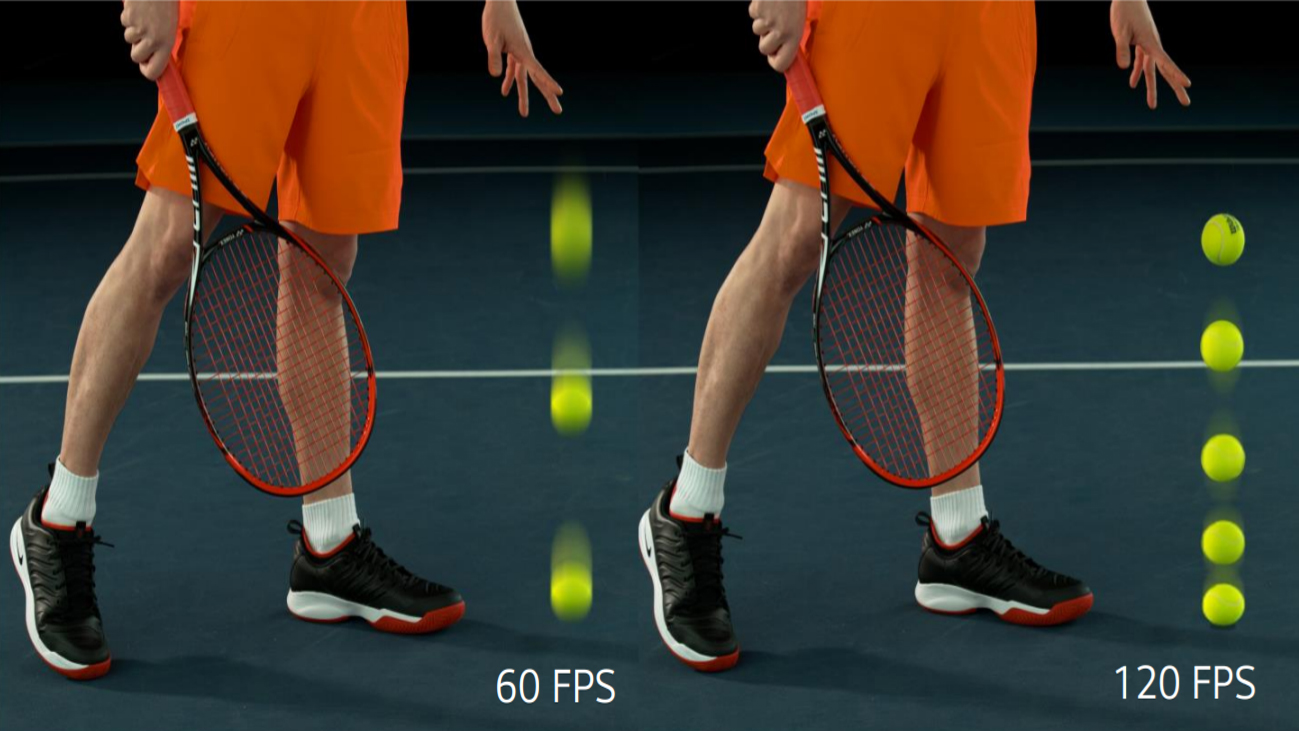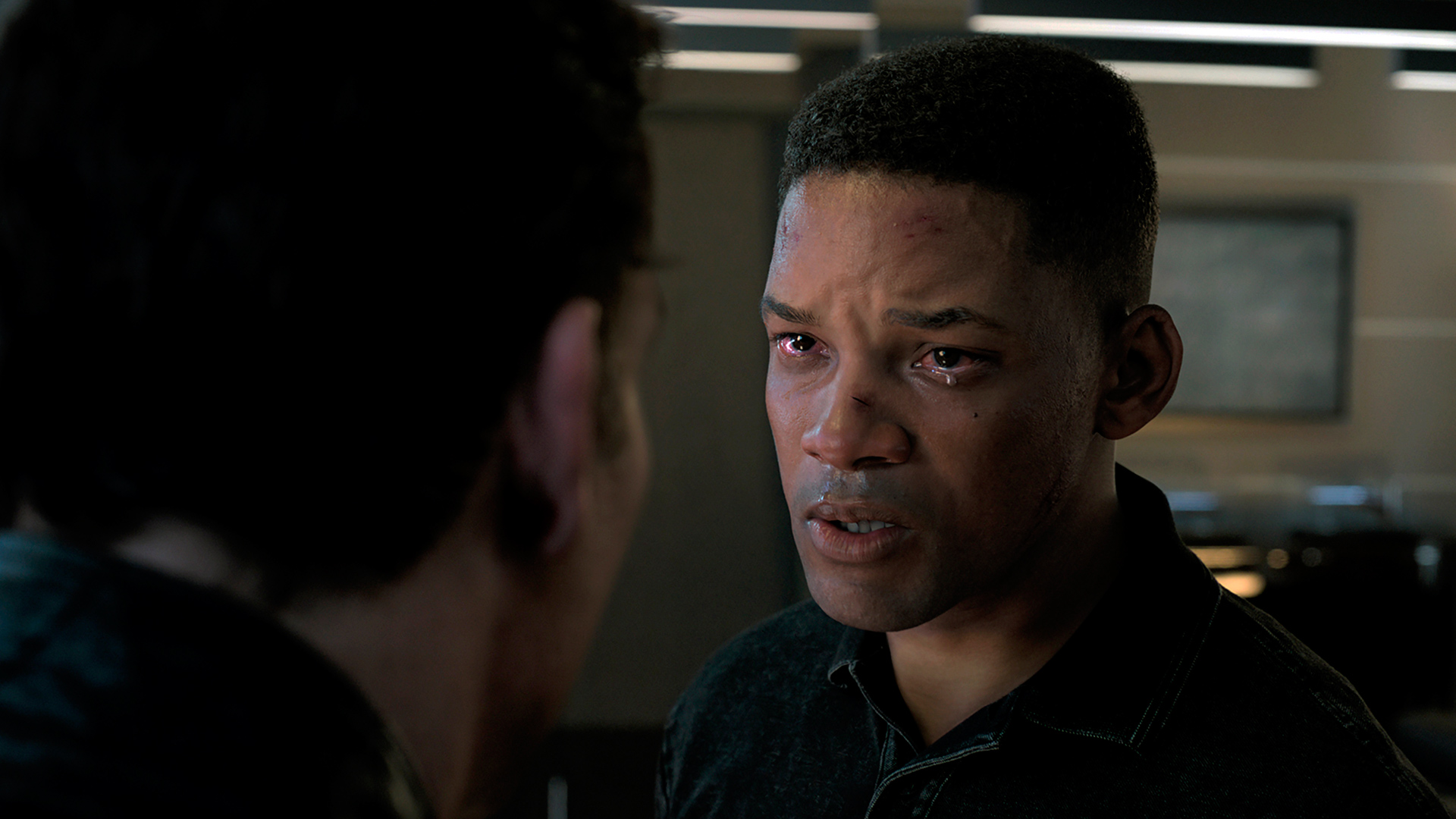Why should you give a damn about movies with high frame rates in 2020?
We spoke to Gemini Man's technical supervisor about trying to bring HFR to the cinema

When it was first suggested that 2012's The Hobbit: An Unexpected Journey might release in a 48 frames per second format in theaters rather than the traditional 24fps we're used to, there was a backlash. High frame rates are celebrated in games, but in movies and TV shows, it's the sort of thing we associate with our parents' TVs when they've messed with the settings – but that's an interpolation effect, rather than a film actually being presented at a high frame rate.

High Frame Rate, or HFR, refers to a frame rate higher than 25fps for motion pictures and 30fps for all other outputs. HFR content offers more visual clarity by capturing more data in the filming process, which can then be displayed on some TVs - like LG's OLED screens with the Alpha a9 processor - that can show native 120 frame-per-second content without motion interpolation.
So how do you fight that stigma? It'll take time, and, honestly, more movies being released in higher frame rates than we see right now. The latest to try it was the Ang Lee-directed Will Smith movie Gemini Man, which released in cinemas last year.
You probably know it as the action movie where young Will Smith fights present day Will Smith. Smith plays the older Henry Brogan, and 'Junior', a cloned assassin sent after the original. The Junior version is a CG creation made by effects company Weta Digital, based on mo-cap from Smith himself, and featuring semi-procedurally modeled skin for realism at a microscopic level.
Filmed in 4K, 3D and 120fps (though most cinema screens showed it in 60fps), the film attracted some positive notices for the technology behind the movie, though reviews were mostly negative. One critic described HFR as making "actors, objects and even the air somehow flimsy and weird and fake".
We spoke with the movie's technical supervisor Ben Gervais, who worked with director Lee on this film, about how higher frame rates can offer improvements to the viewing experience. "Typically, not just in the action genre but in films in general, it's a voyeuristic third-person kind of experience, and [Ang] really wanted the moviegoing experience to be much more intimate," Gervais says.
"What we've found is that the more detail you give to a viewer, the more their eyes like it. The more they forget it's a regular movie screen, and the more they get pulled in to the story."
Ben Gervais, Technical Supervisor
"So as a result of that, one of the things that we've been exploring is high frame rate, and what we've found is that the more detail you give to a viewer, the more their eyes like it. The more they forget it's a regular movie screen, and the more they get pulled in to the story." While it's not what audiences are used to, it can't hurt that some filmmakers want to challenge tradition, when every other film they see is released in the standard 24fps.
"It becomes much more of a first-person type of experience, which in turn gives [Ang] more tools to tell a story, make a viewer feel involved in what's going on, both in the action and the drama, and to really give you this sense of immediacy. That something is happening right now opposed to you just being a passive observer."
Get daily insight, inspiration and deals in your inbox
Sign up for breaking news, reviews, opinion, top tech deals, and more.

- The best Netflix movies
- 2020 movies: what you should watch this year
- Avatar 2: release date and what we know
Fighting tradition
'Intimacy', as Gervais puts it, is arguably one advantage of presenting a film at a higher frame rate, then. But what else is in it for the viewer, to make it worth challenging their traditional notions of what movies are supposed to look like?
"In addition to the intimacy part of it, there's excitement to be had in the action scenes that we have. There's definitely this level of excitement you can get there that you don't get in the same way in a regular action film."
Gervais says it means that typical moviemaking techniques like slow-mo have a different function when you're showing a film at 60 or 120fps – there aren't many slow-mo shots in Gemini Man as a result. "There's a few shots in slow motion, but the fundamental difference is, the reason you're usually using slow motion [in an action movie] is because you want the audience to see something they wouldn't be able to see at 24 frames, because it's just too blurry. We don't have that problem, because you see everything. People can still see things in real time, and it'll actually have that same effect."
"The reason you're usually using slow motion is because you want the audience to see something they wouldn't be able to see at 24 frames, because it's just too blurry. We don't have that problem, because you see everything. People can still see things in real time, and it'll actually have that same effect."
Ben Gervais
"Slow motion essentially becomes a different tool for us. It actually becomes a tool to extend a moment – and that's what Ang uses it for in Gemini Man. As opposed to showing the audience detail that they would otherwise miss, because they see all the detail anyway, it's really [because] Ang likes the moment where Henry and Junior's faces are right up against each other while they're grappling in the catacombs. He wants that shot to last longer, so that's why we shoot it in slow motion, as opposed to just so that people can see what's going on."
We wouldn't necessarily agree that slow-mo is only used in traditional action movies because of blurriness – it's surely as much about extending the moment or looking cool in those instances, too. But it's an interesting point about visual clarity being an upside of higher frame rates.
We ask Gervais what it'll take for audiences to accept the idea of films being presented this way. "Definitely there's an audience adjustment that needs to happen in terms of getting over the way that it feels, but then there's also an adjustment on the side of the filmmaker in adjusting to a new tool. And somewhere they meet in the middle, and that's where the sweet spot is going to be.

"I think we've definitely seen a progression from The Hobbit movies to Ang's last film before this, Billy Lynn's Long Halftime Walk. [With] Gemini Man, we've definitely had a better reception among certain segments of the population to how the high frame rate looks, particularly with younger audiences, especially the under-30 crowd that's spent a lot of time playing videogames and trying things like VR. They have a little more of an open mind over what this technology can mean."
Gervais suggests interest in the format also differentiates based on local history with cinema.
"Also in developing markets, like China and places like that, we're seeing they've got a little less – I wouldn't call it baggage – but they've got less of a history with cinema, and so they're a little more open to playing with conventions and things like that. So over time, I think we'll see more and more acceptance of it."
Gemini Man's 4K, 3D and 120fps format made it easier for the effects team to craft the movie's entirely CG co-lead, too. "At 24 frames in 2D, you can frequently do something like this, but the problem is it looks a little bit wrong and people talk about the uncanny valley a little bit and things like that. But the problem is, when you're at the 2K 24fps, 2D, you can't put your finger on what the issue is. You know it's wrong, but you don't know why it's wrong – because of the motion blurring, because of the low resolution.
"So the 120 and the 3D and the 4K actually helped the visual effects team because every frame was sharper. They could compare it to all the old reference they've got of Will. They pulled tons of reference from press appearances, Will's old movies, Fresh Prince, you name it. So they would have these references for pretty much every look that young Will would give, and then they could look and [go], 'oh, when he starts to frown the corner of his lip does this thing that it shouldn't be doing!' Things like that. So that was very helpful for them."
"There's some wariness because there is pushback from certain people ... But this is really just a filmmaker using a different tool."
Ben Gervais
We ask if the perception of higher frame rates in Hollywood has changed since Gemini Man's release. "I think there is. There's a little bit of pushback, too. I think what people are starting to see is that it can be a legitimate tool. There's definitely some wariness, because there is pushback from certain people. I like to say that critics in particular have a fierce respect for the history of cinema...[laughs]. And it manifests itself in people being a little bit defensive, perhaps. But this is really just a filmmaker using a different tool.
"Ang is really trying to say, with digital cinema in this period, that we have this hundred years of glorious history of celluloid-based cinema, and we've made some great art in that time. And Ang has made some of that great art. But up until this point, it's really been about digital cameras being used to just reproduce the look of celluloid cinema and all the restrictions that that had. [One] of those restrictions that this technology brought on us was 24 frames, and that was the speed we needed to make a soundtrack work. So that's what we used. It wasn't a creative decision, that 24 was better than 25 or 23. It was just the number people settled on."
Gemini Man is available now on Digital and on 4K Ultra HD, Blu-ray & DVD on 17th February, from Paramount Home Entertainment.
- Curious about High Frame Rate? Check out our guide to HFR TVs
Samuel is a PR Manager at game developer Frontier. Formerly TechRadar's Senior Entertainment Editor, he's an expert in Marvel, Star Wars, Netflix shows and general streaming stuff. Before his stint at TechRadar, he spent six years at PC Gamer. Samuel is also the co-host of the popular Back Page podcast, in which he details the trials and tribulations of being a games magazine editor – and attempts to justify his impulsive eBay games buying binges.
